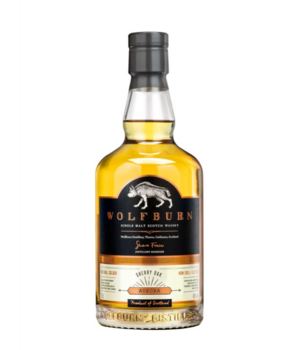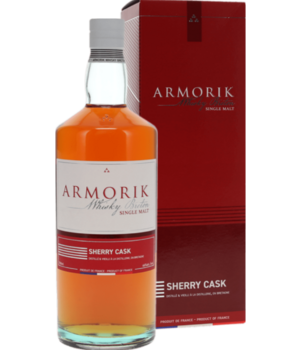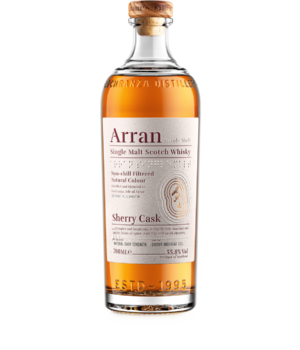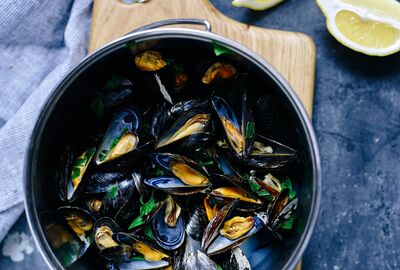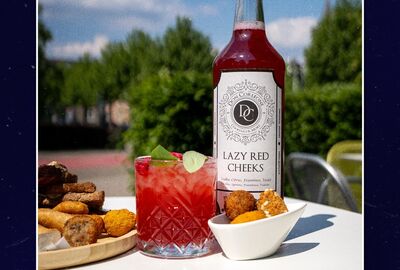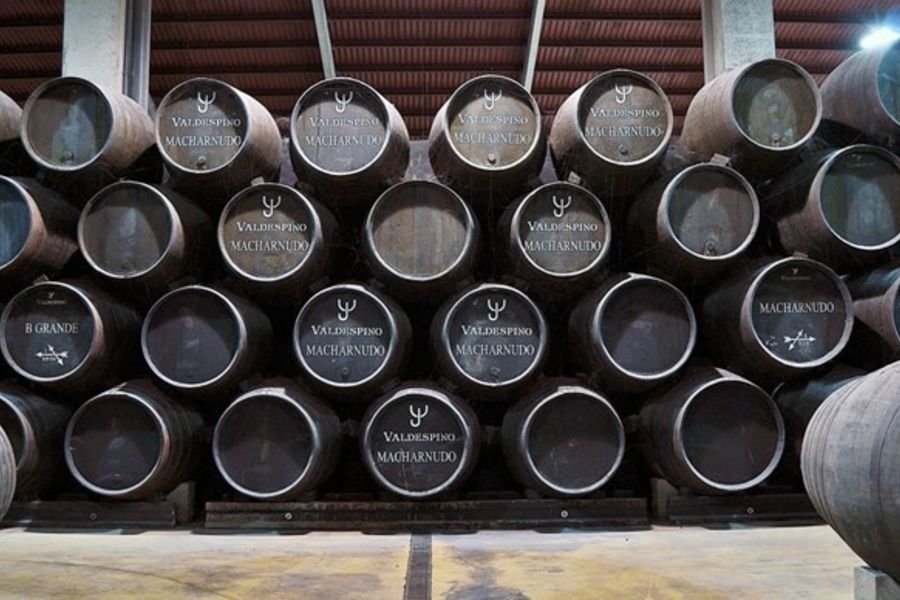
What is a sherry cask?
As you delve further into the world of whisky, you will discover that there are a variety of casks in which the spirit can mature. Think port casks, Madeira casks, red wine casks and many more. A question we regularly hear is "Has this whisky been matured in sherry casks?". It seems like a simple question, and most people are satisfied with a simple yes or no. Yet sherry is not just sherry, and it can be useful to know the differences. Today, we start at the beginning: "What is a sherry cask?" and we immediately give you two excellent recommendations for whisky aged in sherry casks.
Is the term "sherry" protected or defined?
Basically, in the world of whisky, no official definition has been established for exactly what a sherry cask is. The word "sherry" does not even appear in "The Scotch Whiskey Regulations 2009". According to these regulations, Scotch whisky must be matured in oak casks smaller than 700 litres. What exactly happened to the cask before it is used for whisky is not specified.
On the other hand, the legislation surrounding sherry itself is very strict. Sherry is regionally bound to a small area in and around the cities of Jerez de la Frontera, Sanlúcar de Barrameda and El Puerto de Santa MarÃa. Outside this area, although sherry-style wines are produced, by law they cannot be called sherry (similar to champagne). Adding the word "cask" leaves the term open to interpretation. Spanish legislation does try to find ways to control these barrels, but currently a "sherry barrel" is considered to be a barrel in which a sherry-style wine has matured, which does not necessarily originate from the sherry region.
While many sherry casks have not technically contained sherry, in practice they are similar and are approached similarly by the whisky world. Still, this does not fully answer the question.

What does "solera" mean and what does it have to do with sherry?
Sherry is produced using the "solera technique". You also come across this term in the rum world and increasingly in the whisky world, as for example with the Glenfiddich 15 Solera.
The principle is simple. The barrels in which the wine matures are stacked. When the sherry is bottled, it is taken from the bottom barrel, while new wine is added to the top barrel. In this way, old and new wines are constantly mixed, resulting in very gradual changes over the years. This keeps the final product very consistent.
In sherry, the focus of the ageing process is on the controlled oxidation of the wines, rather than extracting flavours from the wood of the barrels. Sherry casks that are part of a solera system are therefore often very old and have little influence on the flavour of the sherry. This type of barrel is therefore also less interesting for maturing whisky, as the interaction between the whisky and the wood of the barrel is limited. However, if you want a strong sherry influence in a whisky, solera casks can sometimes be used. This is usually done as part of a finish, where the whisky first matures in other casks before being transferred to sherry casks, as opposed to "Sherry cask matured" whisky, which is in sherry casks throughout the maturation process.
Where does the sherry cask design come from?
The most common sherry casks are designed after the casks used to transport sherry in the past. Indeed, before 1981, sherry was transported in wooden casks and bottled on arrival. In the 16th century, transport took several months, giving the barrel enough time to absorb the flavour of the sherry without losing the character of the wood. These casks were later reused for maturing whisky.
In 1981, however, the use of wooden casks for transporting sherry was banned. Along with the declining popularity of sherry, supplies of sherry casks for Scottish distilleries also fell, resulting in significantly higher prices (almost 10 times the price of an ex-bourbon cask). This led to a new business model: manufacturing sherry casks specifically for the whisky industry.
Today, most casks used for maturing Scotch whisky are manufactured specifically for this purpose. This has both advantages and disadvantages. One disadvantage is that due to high demand, coopers do not always choose the best quality sherry to "season" the casks. This can also lead to mass production, which can reduce the quality of the casks. Poorly dried and overproduced casks can contain a lot of tannins that give the whisky a tart aftertaste. However, the biggest advantage is that conscious choices can be made regarding the wood used and the type of sherry contained in the casks.
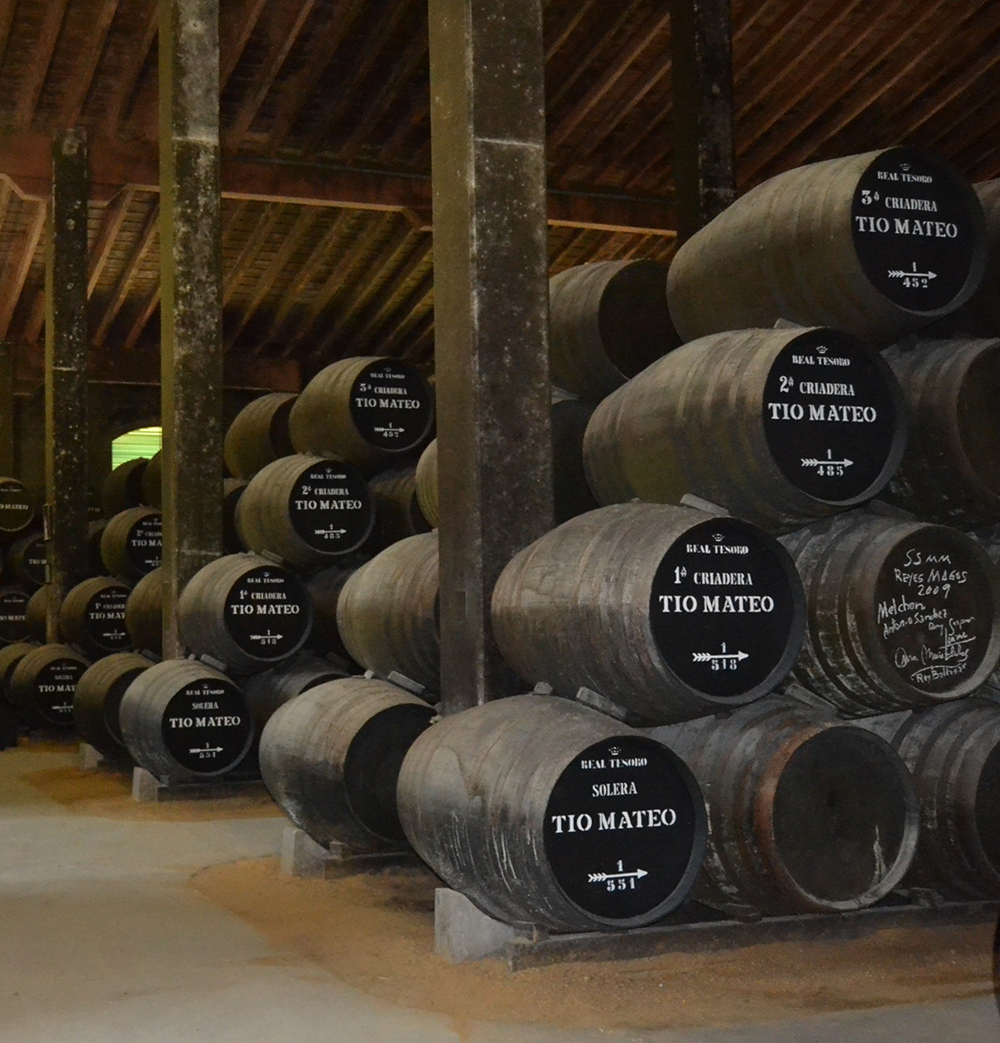
First step in making a sherry cask: which type of wood?
The first variable in barrel making is the type of wood used. Oak is usually used, as Scotch whisky is only allowed to mature in oak casks (Irish whiskey has more freedom here). The usual distinction is between European oak and American oak. But actually, European oak is a complex mix of different wood species. In general, the difference between European and American oak is found in the grain of the wood.
American oak has a very wide grain, resulting in a large contact surface. This allows the whisky to easily absorb the sugars in the wood. American oak thus imparts a lot of flavour to the whisky, with an emphasis on sweeter notes. Think of the typical vanilla flavour (which not coincidentally dominates in much bourbon whiskey), but coconut and fresh fruit are also distinctive flavours of American oak. Although North America is a large continent, oak there shows considerable consistency.
European oak, on the other hand, generally has a much narrower grain. As a result, the sugars in the wood are less accessible. The result is a darker, spicier profile for the whisky. Tannins, dried fruit and citrus aromas often come from European oak. The wood is also more difficult to process into planks, due to its many knots and inconsistencies. So each tree is different and there is a lot of waste in making barrels from European oak compared to American oak.
European oak grows under highly variable weather conditions. Although this is also the case in America, the oak is much less sensitive to this. As a result, different subspecies quickly emerge. Through natural cross-pollination, these species come together and form new varieties. Thus, you will regularly find Russian or Swedish oak among a forest of French oak. French and Spanish oak in particular are most commonly used for maturing spirits. Swedish oak, which is drier and with narrower grain, can be used to a limited extent (as Swedish whisky brand Mackmyra has already demonstrated). Other types of European oak, such as Ukrainian oak, are too hard for maturing spirits, but may be suitable for storage purposes.
How do you get from a shelf to a barrel?
Nowadays, many sherry producers have their own cooperage, which is not surprising given the high demand from the whisky industry. The process of making a sherry cask starts with drying the wood. The planks that arrive at the cooperage are still too moist and contain too many tannins. Putting whisky or sherry directly on this wood would produce a very bitter and unpleasant result. Depending on the type of wood used, the boards need to be dried for months to sometimes years. European oak usually needs less time than American oak, but there is no strict rule of thumb.
Once the oak is sufficiently dry, it can be turned into bars of the right length and size to form a barrel. Each board is cut to size and each bar is carefully inspected. Bars with too many knots are removed. At this point, the bars are still flat and straight. To bend them to the right shape, the cooper makes a kind of tent: the rods are fastened at one end with metal bands. The tent is then placed over a fire, with unusable rods serving as fuel. The fire opens the pores of the wood, making it flexible and creating more contact surface for the sherry or whisky to interact with. At the same time, a carbon layer forms that can absorb impurities from the wine or spirit. Occasionally, water is poured around the barrel, creating steam and making the wood even more flexible.
Once the wood is sufficiently soft, the tent is turned over and the bars are pulled together with cables so that they take the desired shape. The barrel is then reinforced with metal bands. Now the barrel is ready for use and can rest before being filled with sherry or whisky.
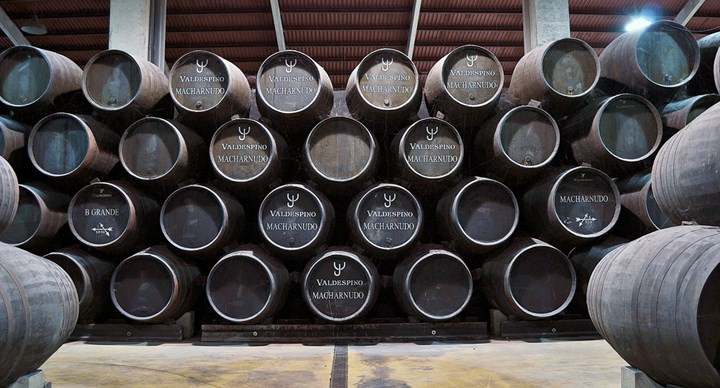
How is sherry made?
So the wood the whisky rests on has a big influence on the final result, but so does the liquid that came into contact with that wood before, of course. In this case, that is sherry.
Sherry, as you may know, begins as a grape. The most commonly used grape for sherry is the Palomino grape. This grape is low in sugar and acid and generally produces somewhat bland wines. However, it is perfect for making sherry because most of its flavour and complexity comes from the ageing process. After the grapes are pressed, the juice is fermented. Once it reaches an alcohol content of 12%, it is transferred to barrels and the type of sherry that will be made from it is determined.
Fino Sherry
The first style is fino: a dry style that is light in colour, with a nutty, fresh and young character. For this, they fortify the wine to 15% alcohol. This alcohol concentration allows the yeasts in the barrel to stay alive. They form a layer in the barrel called the flor. This layer avoids contact with oxygen and also removes residual sugar from the wine. It also prevents the wine from discolouring. American oak is practically always used for fino sherry and these barrels rarely flow on to the whisky industry. The exceptions are some legendary bottlings such as the Glenfarclas 1966 Fino Sherry and Bowmore 1964 vintage fino. Another example that can still be found: the Kavalan Fino.
Oloroso Sherry
The style most common in whisky maturation is oloroso sherry. It is a wine that is very rich in flavour and still contains some residual sugar. Traditional Spanish oloroso is relatively dry, but big brands sold abroad are often extra sweetened, simply because it sells better. To produce oloroso, the wine is fortified to 17% degrees, which causes the yeast in the wine to die. This allows contact with air, discolouring the wine while making it more complex and rounded in flavour.
Pedro Ximéne (PX) Sherry
A third style of sherry is becoming increasingly important in the whisky industry: Pedro Ximénez aka PX. This starts with the grape of the same name being dried to an almost raisin-like size. Then the grapes are pressed aslog. The resulting juice is very high in sugar content and thus also makes a sweeter sherry. It is fuller and rounder in texture and is also sometimes used to pour over vanilla ice cream. It is also used to sweeten oloroso for the foreign market.
From sherry to sherry cask
To create a sherry barrel that can be used specifically for maturing whisky, young oloroso is first put on the barrels. This strips the cask of its initial bitter and intensely woody flavours. The young oloroso lies for several months before being transferred to another cask to do the same. After repeating this process about four times, the sherry has become undrinkable and is processed into sherry vinegar.
The barrel is then filled with more oloroso or Pedro Ximénez, depending on the profile the whisky maker wants to achieve. Oloroso gives flavours such as dry fruitiness and hints of tobacco to the whisky, while Pedro ximénez in turn gives syrupy ripe fruit and a sweet touch. These wines can lie for several months, but sometimes years, before being transferred into a solera system. The empty remaining cask leaves for Scotland, Ireland or Japan, where it is used to age your favourite.
Notable whisky brands that work a lot with sherry casks include Glendronach, Glenrothes, Macallan, Redbreast, The Irishman, Edradour, Ballechin and Kavalan. Although there are few whisky brands that do not experiment with the cask type.
Discover our full whisky range >

Marketing • IT • Klantenservice
I've known Broekmans since I graduated in 2006 and thanks to Jan I've come to know the passion for spirits. I dedicate myself every day to the webshop, customer service and all the IT involved. In my spare time, besides whiskey, I can also really enjoy rum, but just as much as a gin tonic or a simple bellini. In the words of Martien Meiland, if there's no alcohol in it, don't call me!




